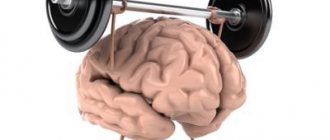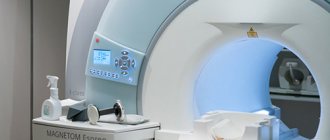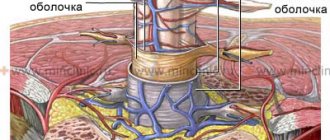For every thousand newborns, there is one child with cerebral palsy. This disease and its causes are still being studied in detail. We will tell you whether cerebral palsy is a congenital or acquired disease, and how it is related to genetics.
For a long time it was believed that infantile paralysis has no relationship with heredity. Now scientists are not so clear about the question “is cerebral palsy inherited.”
It has been precisely established that in 2% of cases cerebral palsy is inherited. But still, it cannot be said that cerebral palsy is a hereditary disease. It can be triggered by a hereditary predisposition to certain pathologies.
Is cerebral palsy inherited? Causes and prognosis of the disease
To understand whether cerebral palsy is inherited, you need to learn more about the features of this disease. Such worries are unfounded, because doctors unanimously insist that there is no danger of transmitting this disease at the genetic level.
Cerebral palsy is a disease that directly affects the infant’s brain, leading to oxygen deprivation and motor impairment. Even if children with cerebral palsy have already been born in your family, this is not a reason to refuse motherhood in the future.
Research by Pakistani scientists has proven that this disease is not inherited. The experiment involved 10 families who are part of the so-called “risk group”, and only one of them had a baby with a mild form of cerebral palsy. If you have “bad” genes, the risk of having a sick child increases slightly – by 2%. Much more often, cerebral palsy affects newborns due to prenatal or postnatal complications. Genetics is only one of many reasons for the development of pathology, so the question of whether cerebral palsy is inherited can be answered in the negative.
Cerebral palsy affects the nervous system. It is genes that directly affect the state of the central nervous system. “Bad” genes can be passed from parents to baby and slightly increase the risk of developing pathology. However, this is not a pattern, but rather an exception to the rule.
There are cases when sick parents had healthy children, or one of the twins was healthy, and the second had cerebral palsy. Hereditary gene diseases can negatively affect the health of the child. The baby may experience the following pathologies:
- impaired blood supply to the brain;
- blastomazotic processes in the spine;
- stuttering;
- epilepsy or hysteria.
Such manifestations of hereditary pathology of the nervous system are very similar to the symptoms of cerebral palsy and it is sometimes very difficult to differentiate the disease. In order to accurately diagnose and prescribe treatment, you need to conduct many studies of the little patient’s body.
Even if your parents, uncles, aunts and other relatives gave birth to children with cerebral palsy, this does not mean that such an illness will necessarily affect your future baby. The risk, of course, increases slightly, but these are not critical indicators. To protect yourself and your baby, visit your doctor regularly, get tested, and monitor your health during pregnancy.
www.wday.ru
Results of the latest research into the causes of cerebral palsy
A child who suffers from paralysis can be easily recognized by characteristic motor impairments: his movements are incorrect or involuntary. The muscles are too tight, causing the limbs to become stiff.
Pakistani scientists conducted observations of families in which children with cerebral palsy of various forms are growing up. It has been established that there is a risk that paralysis will recur in such a family (probability – 1:8). In this case, the autoimmune recessive form is observed mainly. A gene mutation (homozygous) was detected in 4 children. It provokes pathological changes in the protein structure.
After long-term observation of English and Swedish families in which children with paralysis are growing up, scientists identified 2% of patients with the genetic nature of the disease. They had no prenatal or postpartum complications.
Serious research was carried out by Norwegian scientists. They followed nearly 2 million participants using the Norwegian Medical Birth Registry. Data from 1967 to 2002 were analyzed.
Norwegian scientists have found that in families with a sick child, as well as in twins, the risk of developing paralysis increases. If one twin has cerebral palsy, the risk that the other will also develop the disease increases 15 times. The risk of developing the disease increases if a child with this pathology has already been born in the family. There is a high chance that his next sibling will also get sick. But developmental pathologies of twins and twins may be due to the fact that inside the mother’s womb they simply mechanically interfere with each other. They have less space to develop, which means the brain receives less oxygen.
If one of the parents has cerebral palsy, the likelihood that this disease will affect the child increases 6 times. The gender of the sick parent does not affect the likelihood of children becoming ill. Studies have not found an increase in incidence if a third-degree relative suffered from paralysis.
The listed facts only confirm that cerebral palsy can rarely depend on genetic factors.
Research is further complicated by the fact that children with paralysis often do not start families. Even if they manage to find a life partner, not everyone decides to have a child. Accordingly, it is not so easy to determine whether a disease is transmitted through genes.
There are many forms of infantile paralysis, some of which are completely independent of genetics.
Weak genes
It is still generally accepted that cerebral palsy is not a hereditary disease, but there are hereditary mechanisms that can influence its development. The severity of symptoms can also be transmitted through genes. We are talking about how resilient the nervous system is, how capable it is of resisting negative factors.
Scientists have no doubt that there is a relationship between pathological changes in the nervous system and the development of the disease. It has been precisely established that there are genes responsible for the state of the central nervous system and its functioning. In 2% of cases, it was found that cerebral palsy is hereditary.
Can broken DNA cause cerebral palsy? Doctors do not rule out the fact that gene disruption indirectly affects the development of paralysis due to malfunctions of the central nervous system. It is possible that some children are born with a genetic predisposition to a weak nervous system. This can explain the different development of children with the same pathologies (fetal hypoxia, asphyxia, prematurity). Some children develop normally even after such pathologies, while others develop infantile paralysis in one form or another.
Scientists emphasize that hereditary predisposition may be associated with the following factors:
- blood circulation in the brain tissue is impaired;
- spina bifida develops, blastomatous processes are observed;
- hysteria, stuttering, narcolepsy, epilepsy.
All of these manifestations can accompany cerebral palsy of varying severity.
The British medical journal BMJ published the results of many years of research that identified hereditary factors among the causes of cerebral palsy. Scientists observed families in which someone suffered from this disease. It has been established that it can be transmitted through generations. If someone close to you suffers from paralysis, the risk that the children in this family will also experience cerebral palsy increases significantly.
Norwegian scientists have found that cerebral palsy occurs in 2 cases out of every 1000 births. Often the disease leads to disability. The child’s gait and movements are impaired, sometimes speech, thinking, memory suffer, involuntary movements may appear, and rigidity of the muscles of the limbs develops.
The extent to which a patient's functionality is affected depends on the severity of the disease. In severe cases, the patient is unable to move, has noticeable intellectual impairments, and may develop blindness and epilepsy.
The problem in studying cerebral palsy lies in the fact that diagnosing neuromuscular diseases is a labor-intensive process. There is a lack of modern equipment and competent specialists. Therefore, diseases of the central nervous system that are only similar to paralysis are often classified as cerebral palsy.
Cerebral palsy can be associated with genetics in the following way: there is a part of the body that is genetically weakened. This is where disease and hereditary factors may intersect. But a direct connection between the genes of the parents and the child’s disease was not found. The question was also studied: is cerebral palsy inherited from father and mother? The gender of the affected parent has not been found to increase or decrease the risk of developing the disease. The fact that one of the parents suffers from paralysis increases the risk of having a sick child. However, the likelihood that a child will be born with cerebral palsy remains too low, so parents should not refuse to have a child for this reason. If a grandmother or grandfather suffers from the disease, this does not at all affect whether the baby will be born healthy.
Symptoms of cerebral palsy often resemble individual diseases of the muscles and nerves, which are hereditary. There are currently no thorough diagnostic parameters for neuromuscular diseases. This makes making a diagnosis much more difficult. However, cerebral palsy largely depends on the disruption of immunochemical mechanisms that are controlled by genes. Scientists do not stop looking for a broken gene that can trigger the development of cerebral palsy. There is now quite a long way to go in solving this problem. The results obtained are difficult to interpret from a genetic point of view, because scientists have not yet determined how much the predisposition of the nervous system affects the functioning of the brain.
People with severe cerebral palsy find it difficult to arrange their personal life. They rarely go out in society; often, acquaintance is possible only with a disabled person. Such couples rarely have children. If healthy couples have children in 57% of cases, then in couples faced with a similar disease - only in 10-11%. The quality and duration of their lives are reduced due to concomitant diseases and disorders of brain activity. We are talking about a syndrome that develops in severe forms of cerebral palsy. Patients with a mild form can live to a ripe old age.
The essence
Cerebral palsy (cerebral palsy) is caused by a number of factors that cause damage to the child’s brain. The main risk factor is oxygen starvation of the brain, due to which irreversible pathological changes develop in the tissues. Skeletal muscles change pathologically. Muscle mobility decreases and pain appears. These symptoms are accompanied by others - speech, vision, hearing are impaired, convulsions appear, and pathologies of mental development are observed. Symptoms are especially pronounced if cerebral palsy of groups 1 and 2 develops.
The term cerebral palsy combines a group of non-progressive chronic movement pathologies. They are secondary, the primary cause lies in brain abnormalities or lesions that develop during the peripartum period. The most common condition is congenital cerebral palsy. There may also be acquired forms of it. In adulthood, the likelihood of having a normal personal life and starting a family decreases significantly (we are talking about a pronounced manifestation of the disease).
The problem is that the patient develops visible movement disorders. His limbs don't move correctly. In 30-50%, motor disorders are accompanied by a slowdown in intellectual development. Most often, intellectual impairment accompanies spastic quadriplegia (one of the forms). Due to disturbances in the physiology of brain tissue, it is difficult for such children to master speech; they begin to talk later.
Traditionally, the cause of paralysis is considered to be that cells die in certain parts of the brain, or that these lobes initially developed incorrectly.
The changes can vary in intensity - from relatively mild to extremely severe, in which the patient cannot move. Infantile paralysis can result from a number of diseases, for example, polio, epilepsy. Now progressive scientists are increasingly suggesting that genetic predisposition also plays an important role in the development of pathology.
The disease manifests itself in the form of persistent motor disorders. They do not progress during further development of the organism. This gives scientists a reason to traditionally claim that infantile paralysis is not inherited.
Prevention
Preventive measures are designed to prevent the consequences of the influence of negative factors on a person predisposed to the onset of the disease. These are the simplest actions that will be useful for anyone:
- Elimination of chronic inflammatory processes in the body.
- Quitting nicotine and alcoholic beverages.
- Reducing time in the sun and using sunscreen.
- Proper nutrition and vitamin therapy during periods of deficiency of nutrients in food.
With a hereditary predisposition, psoriasis occurs suddenly when the body's defenses are weakened. Therefore, it is recommended to adhere to the rules of prevention at all times, and in case of exacerbation, immediately consult a doctor to prescribe individual therapy.
Is it possible to live with the disease?
Cardiologists believe that people with this disease have many chances to live a normal life. Approximately 70% of operable forms of the disease can be completely eliminated with surgery. Today, the country is introducing a permanent practice of referring every pregnant woman to a geneticist. And it’s better to go to him before conception instead of sitting and wondering whether the parents are passing the disease on to the child or not. Approximately 80% of diseases are transmitted through the female line, i.e. from grandmothers and mothers. Therefore, it is necessary to undergo examination not only to identify heart defects, but also to prevent the development of other ailments. As already mentioned earlier, if the disease is confirmed, then doctors can offer the following solutions to the problem:
- abortion if the baby is not viable (CardioPlanet.ru is categorically against any abortion);
- emergency surgery immediately after birth.
Many cardiologists are confident that we inherit almost all anomalies of the cardiovascular system. We show not only external resemblance to our parents, but also molecular
The genetic code stores information about all ancestors, so studying it is important when planning pregnancy
To get approximate information about what characteristics the child will have, it is enough to have eggs and sperm tested. After analyzing protein molecules, the doctor will understand what ailments a small patient may encounter. Some modern medical centers practice a procedure for partially changing the genetic code. It allows you to stop congenital diseases at the stage of the first development of the embryo.
Heredity is literally “hardwired” into our DNA
Some believe that such interference with natural mechanisms is completely unnatural and should not be done, while more responsible parents try to thoroughly plan the entire pregnancy. The analysis allows you to create an accurate genetic map, taking into account relatives up to the third generation. Further, the information people provide becomes less accurate, so identifying inherited abnormalities becomes more difficult.
Clinical picture of cerebral palsy
Signs of this pathology can manifest themselves immediately after the birth of a child or make themselves felt during infancy.
If a child develops this disease, it is very important to examine him to find out the causes and begin treatment. All adults should keep a notebook on the development of the baby, in which all his main achievements should be recorded.
All adults should keep a notebook on the baby's development, in which all his main achievements should be recorded.
Parents must control the reflexes that appear in the baby.
It is very important to control the sequence and development of speech, motor functions, skills
You should pay attention to such important features as freezing in one position, lack of interest in games, nodding your head
The diagnosis of cerebral palsy must be made wisely, and doctors do not always make this diagnosis. If alarming symptoms occur, the baby is diagnosed with encephalopathy.
It happens that the child recovers and the adult does not have similar problems.
If there are no changes, and the child does not speak, it is difficult for him to walk, he is passive, and has disorders of the nervous system, then a diagnosis of cerebral palsy is established.
The following symptoms will help to suspect that a child has cerebral palsy:
- insomnia;
- the child is significantly delayed in physical development;
- the baby fixes his gaze on something, he experiences seizures;
- problems occur with muscle tone;
- the development of the emotional background is significantly behind;
- disproportion of the body, for example, when one arm is fuller than the other.
Could the next child in the family then have cerebral palsy again?
In the case where the first child has cerebral palsy for genetic reasons, the risk of repeating the diagnosis of cerebral palsy for the second increases 10 times. Existing methods in genetics help parents calculate individual risk. However, in this case, it is important to examine the genetic data of the child with the syndrome, and not the parents. “When we interpret genetic data, we always rely on the clinical picture. In order for the diagnosis to be accurate, it is necessary to study the DNA of a person who has the disease, otherwise there is a greater chance of missing something or even finding something that is not what is needed,” says Ekaterina.
Got it done
The perceived information that the long-awaited daughter would be unwell unsettled her at first, but Irina Khakamada’s strong character, her husband’s support and faith in the best helped her cope with her emotions. Over time, the understanding came that the baby would simply be different from other children, her extra chromosome was simply a mistake of nature.
Irina Matsuovna read a lot about the disease and realized that not everything is so terrible, the main thing is that she has this sweet baby and a beloved, reliable person who is also not afraid of difficulties.
Until a certain time, the girl was not shown to the public; society was not ready at that time to adequately respond to such information. The girl grew up and delighted her parents with her obvious successes, and she was also pretty.
Irina's daughter was born with Down syndrome
Theory of hereditary development
The genetic theory of the occurrence of psoriasis appeared a long time ago and was based on cases of detection of pathology in family members of the patient, including through generations. But during the experiments it was found that the death of epidermal cells causes a defect in a specific gene, and this leads to the appearance of psoriatic rashes.
In addition, psoriasis is not always caused by a genetic defect, and relatives with this disease can be found in only 63% of patients. We can conclude that the pathology is genetic in nature and can arise due to many provoking factors.
Causes have been identified that increase the likelihood of the disease occurring in patients who do not have a genetic predisposition, and significantly increase the risk of developing pathology in people whose relatives have been diagnosed with this disease.
Can psoriasis not be inherited?
Psoriasis is not always inherited (from both mother and father). If the disease is observed in one of the parents, then the probability that the pathology will manifest itself in the child is about 20-25%. And with both parents with a family history, the risk of developing psoriasis is 75-78%. In most cases, transmission of the disease also occurs. There are rare exceptions when one of the family members suffers, for example, from the teardrop form of the disease, and the baby develops vulgar psoriasis.
Children from the same parents can either inherit the disease or be completely healthy. One of the heterozygous twins may be healthy, but the other is sick. An examination of homozygous twins with an established genetic predisposition showed that the defective gene is transmitted to both twins. Moreover, the disease can manifest itself at different ages, which is associated with varying degrees of influence of damaging factors.
The likelihood of transmitting the disease to a child
Psoriasis cannot be classified as a hereditary disease, since typical genetic pathologies manifest themselves regardless of external conditions. The development of psoriasis largely depends on various factors. But it makes no sense to deny the hereditary type of the disease, since long-term observations of patients have shown the following pattern:
- If one of the parents has psoriasis, the risk of developing the disease in children increases 4 times.
- If both parents have a defective gene, then the probability of inheriting the disease is already 75%.
It is impossible to completely isolate a baby from all negative factors. Therefore, parents should vigilantly monitor the condition of the child’s skin in order to begin timely treatment at the first manifestations of the disease.
What does genetics have to do with cerebral palsy?
Cerebral palsy is a group of different conditions, a syndrome that has several causes. According to geneticist-endocrinologist and pediatrician Natalia Belova, quite often a child is given this diagnosis, arbitrarily naming the reason and stopping the examination. Ekaterina Pomerantseva believes that even with obvious factors for the occurrence of cerebral palsy, the patient’s condition may have a genetic cause.
Parents need to distinguish signs that may indicate a genetic origin of cerebral palsy. This is important because it will be necessary to change the standard rehabilitation scheme - massage, gymnastics, speech therapy and sensory room - and adapt to the specific needs of the patient. Pomerantseva names the following signs that could become red flags:
- absence of a pronounced condition in the perinatal period;
- unstable, paroxysmal course of the disease, dependence on environmental factors, nutrition, body temperature;
- normal on MRI or damage limited to the globus pallidus (paired area of the lenticular nucleus of the cerebral hemisphere. - Note TD);
- isolated muscle hypotonia, high severity of ataxia (impaired coordination of muscle movements. - TD's note), paraplegia (complete loss of the ability to voluntarily move the upper or lower extremities. - TD's note);
- impaired eye movement, rigidity instead of spasticity (limitation of muscle mobility due to their tension. - Note TD);
- signs of peripheral nerve damage: decreased reflexes, loss of sensitivity.
In an ideal situation, genetic testing for cerebral palsy should begin after an MRI, examination by a geneticist and biochemical analysis.
What are the analysis methods?
Next-generation sequencing NGS is a technique for determining the nucleotide sequence of DNA and RNA to obtain a description of its primary structure.
Tandem mass spectrometry (TMS) is a method for studying and identifying a substance, allowing one to determine the concentration of various components in it.
Chromosomal microarray analysis (CMA) is a molecular genetic study of a karyotype, a set of characteristics of a complete set of chromosomes inherent in human cells.
“In this case, it is cheaper and more accessible to do an analysis of the child’s karyotype, which in many places is carried out under compulsory medical insurance, and also to do tandem mass spectrometry (TMS), which can also be done for free,” Pomerantseva believes.
If the medical history, examination, tests and MRI indicate perinatal brain damage, then additional examination is not required and, most likely, the cause of cerebral palsy is brain damage. But if all these results do not agree with each other or there are any of the red flags listed above, genetic testing is necessary.
What mental illnesses are most often inherited?
1. Mental development disorders in children
- Attention deficit hyperactivity disorder (ADHD) is characterized by impulsiveness, difficulty concentrating, and increased physical activity. Often this disorder is combined with depressive states and behavioral disorders.
- Dyslexia - the inability to read and compare what is written with speech, in some cases, is hereditary.
- Autism is a severe mental disorder that results in impaired social adaptation. An autistic child is withdrawn, he does not want to communicate with the outside world, he exists in his own personal space. He cannot stand any changes, he has his own rituals, which he strictly observes. He constantly repeats stereotypical movements (swinging, jumping) or the same phrases.
Autism is usually diagnosed in the first three years of a child's life.
It is believed that the role of heredity in the occurrence of this disease is great.
2. Schizophrenia
This is a mental illness characterized by disturbances in thinking, perception of the world, inappropriate behavior and abnormal reactions to stimuli. The disease may be accompanied by agitation, delirium, and hallucinations. Patients are prone to depression and suicidal tendencies.
As a rule, the onset of the disease occurs between the ages of 20–22 and 30 years.
Heredity plays a significant role in the occurrence of this disease, but other factors are no less important: complications during pregnancy, difficult childbirth in the mother, infections, difficult psycho-emotional situations, and even birth in winter.
3. Affective bipolar disorder
Otherwise, this mental illness is called manic-depressive psychosis. It occurs with alternating phases: depression and excitement, sometimes with aggression. Between these phases, intervals of enlightenment are possible.
4. Alzheimer's disease
This disease develops after 65 years and is initially expressed in forgetfulness and difficulty concentrating. Then confusion and loss of orientation in space arise. Irritability, unmotivated aggression appear, and speech is impaired. Dementia develops.
Quite rarely, the disease begins earlier, and here a hereditary factor - a pathological gene - plays a significant role.
Forms
As mentioned above, the development of cerebral palsy is divided into three age stages. But there is another classification that divides cerebral palsy according to the form of the disorder:
One of the most difficult forms among them is spastic tetraplegia, characterized by damage to the areas of the brain responsible for motor functions. This mainly occurs during intrauterine development with oxygen starvation
This type manifests itself in problems with swallowing, speech, attention, the child develops more slowly, vision problems and strabismus appear. The most common form is spastic diplegia, which most often occurs during premature birth.
It is accompanied by damage to the lower extremities, speech problems, and developmental delays. But often children with this form of cerebral palsy have good mental abilities, study at school on an equal basis with everyone else, and keep up well with their peers. The hemiplegic form is characterized by disturbances in the movement of the upper limbs. The cause of its development is a cerebral hemorrhage or a heart attack. It is distinguished from other types of cerebral palsy by symptoms such as the child's slowness and frequent epileptic seizures. The dyskinetic form is considered the easiest, since problems arise only with the musculoskeletal system, and mental abilities do not suffer in any way. The ataxic form can occur when the lobes of the brain are damaged and is characterized by mental retardation and trembling of the limbs.
There are also mixed forms that can combine the symptoms of several forms.
Story
For the first time, the British surgeon John Little dealt in detail with disorders in the skeleton and nervous system during childbirth at the beginning of the 19th century. And in his honor, cerebral palsy is sometimes called “Little’s disease.” The term “cerebral palsy” was introduced by the Canadian physician Sir Osler in his book of the same name, The cerebral palsies of children. Thus, cerebral palsy has been studied for several centuries, and scientists continue to improve their knowledge in this area. They are trying to find answers about the causes of this pathology, whether it occurs due to unsuccessful childbirth and whether cerebral palsy can be transmitted from parents, or maybe this disease is a consequence of abnormal intrauterine development?
Signs of schizophrenia
Research can identify potentially mutating genes, or the lack thereof. It is these genes that are the first reason that can increase the chance of the disease. There are approximately three types of symptoms by which psychiatrists can determine whether a person is sick:
- Disorders of attention, thinking, and perception are cognitive.
- Manifestations in the form of hallucinations, delusional thoughts that are presented as genius.
- Apathy, complete lack of desire to do anything, lack of motivation and will.
Schizophrenics do not have a clear organization and coherence of speech and thinking; the patient may think that he hears voices that are not in reality. Difficulties arise in social life and communication with other people. The illness is accompanied by a loss of all interest in life and events, and sometimes severe agitation may appear, or the schizophrenic may freeze for a long time in an unusual and unnatural position. Signs can be so ambiguous that they must be observed for at least a month.
Is psoriasis inherited?
As has already been proven, psoriasis is not a contagious disease.
A person suffering from skin lesions can come into contact with others without the risk of transmitting the disease. As for its nature, the gene is not always inherited, but even if a person received it, the causes of symptoms are rarely congenital. For example, he may become ill as a result of a sharp decrease in immunity or a violation of lipid metabolism in the body.
Often the appearance of plaques is caused by hormonal imbalance, prolonged use of certain medications, or violation of the rules for taking them. Among these drugs are drugs of the antimalarial group, drugs with lithium salts, and beta blockers.
Sometimes pathology begins to develop if a person has suffered from infectious and some other diseases: sinusitis, otitis media, sore throat. There have also been cases of the disease being diagnosed in people infected with HIV.
Lifestyle is a serious factor. Those who visit the solarium too often or spend a long time in the open sun are at particular risk.
Another reason for the development of the disease can be skin injuries: burns, cuts, insect bites. Finally, strong feelings can provoke the appearance of unpleasant symptoms. Moreover, these are not only troubles and severe stress, but also positive emotions if they are expressed too strongly.
From father to child
In some cases, a father can pass on the psoriasis gene to his baby. The risk of inheritance with paternal predisposition to skin diseases ranges from 14 to 19%.
When twins are born, the risk that one of the children will begin to show symptoms of the disease reaches 70%. Approximately the same possibility exists when both parents have psoriasis.
If the baby becomes a carrier of the gene, symptoms may not appear until many years later. But this does not always happen: if there are no other provocateurs, psoriasis is usually dormant and does not cause any inconvenience.
From mother to daughter or son
The situation when a son or daughter can inherit a disease from their mother also occurs quite often. In this regard, women need to take into account several nuances:
- During the period of bearing a child, the disease calms down, and symptoms manifest themselves extremely rarely. An exception may be the first trimester of pregnancy, when the body undergoes restructuring;
- During menopause, hormonal fluctuations occur and the disease worsens. By the way, due to hormonal imbalances, psoriasis often appears during puberty;
- When preparing for conception, it is better to consult a dermatologist. The doctor can adjust the treatment or recommend preventive measures, which will allow you to give birth to a healthy baby.
Breastfeeding has its own characteristics. As a rule, at this time, instead of using strong drugs, the specialist selects gentle therapy.
Therapy for cerebral palsy
Treatment of this pathology is based on various training sessions to reduce the severity of the neurological problem.
Work and physical therapy lead to improved muscle tone. To correct speech, the help of a speech therapist and hearing correction is required.
Various orthopedic devices improve balance and walking.
A long course of treatment must necessarily include training in special techniques, the development of communication skills, and psychological consultation.
Therapy for the disease is also based on a course of massage and a set of physical exercises.
Doctors recommend using special medications to reduce muscle tone and improve tissue nutrition.
It is necessary to start a course of rehabilitation at an early stage of development in order to exclude serious complications in the baby’s development and disability.
Medications should only be prescribed by experienced specialists.
Advice from my personal experience: Treatment should be carried out in conjunction with a neurologist, massage therapist, exercise therapy instructor, and parents.
With this, today we say goodbye to you, see you on the pages of our blog.
Read, leave your comments, subscribe to new articles.
Treatment
Unfortunately, this disease is incurable. All actions are aimed at reducing the manifestation of various symptoms. Thus, drug treatment usually includes anticonvulsants and relaxants. The child is often prescribed additional procedures in the form of massage, physical therapy, and speech therapy classes.
If you do not treat cerebral palsy in time, you may develop an orthopedic problem, which will also have to be treated later.
Cerebral palsy is a serious diagnosis, but you can live with it. And live fully, getting everything you want and achieving your cherished goals. Knowing whether cerebral palsy is inherited and what forms and methods of treating this disease exist, you will be able to build a plan to combat the described illness and not succumb to it.
Features of the disease
In addition, the cells of brain tissue and neurons that transmit nerve impulses lack chemicals, which provokes a disruption in the functionality of the entire body.
Despite the pronounced symptoms, the disease is difficult to diagnose, since each organism is unique.
The brain is a very complex instrument, and many symptoms and signs are common to different human diseases or conditions.
Doctors distinguish 4 stages of Alzheimer's disease:
- Preliminary stage - no noticeable violations. Memory and brain functions are normal. Even medical examinations do not show pathologies.
- Soft stage - minimal changes appear. Others perceive this as a normal aging process. The patient experiences slight memory lapses and sometimes cannot remember simple information. More than 50% of people over 60-70 years of age are susceptible to this, and the symptoms cannot yet clearly indicate the presence of Alzheimer’s.
- Moderate stage - symptoms are more pronounced. There is a lack of coordination and confusion. Memory lapses appear more often, and patients may try to hide it from others. The disease is usually diagnosed at this stage. The development period of this stage lasts from 2 to 7 years.
- Severe stage - difficulties arise in remembering information read or heard. Sometimes you need to repeat one phrase several times so that the patient can remember it. There is moodiness, restlessness, anxiety and even depression. Temporary loss of orientation in time and space is possible. Close people and recent events are forgotten. It is associated with permanent damage to the brain, and symptoms depend on which part of the brain is most affected.
The duration of the stages can vary: from 2-5 to 20 years. Neurological changes in each individual case occur depending on the conditions and characteristics of the body.
The following reasons can speed up the process and provoke the disease:
- injuries;
- past illnesses;
- lack or excess of certain substances;
- atrial fibrillation;
- level of knowledge (the less educated a person is, the higher the chance of Alzheimer's disease);
- Lifestyle;
- nutrition.
There is a myth that women are more likely to suffer from Alzheimer's disease than men. This is primarily due to longer life expectancy, but not to gender. The disease is equally insidious to everyone.
Symptoms
Symptoms of cerebral palsy may vary depending on age. Basically, disorders are associated with the musculoskeletal system, so there is a division into three stages:
- early (up to 5 months);
- initial residual (from 6 months to 3 years);
- late residual (over 3 years).
The first symptoms that can be observed at an early stage are delayed physical development (the child does not hold his head, does not sit down, does not crawl). He uses only one hand, which is noticeable during games, and infant reflexes, which fade away at a certain age, continue to accompany the baby’s actions (for example, the grasping or stepping reflex).
But most often, various signs of cerebral palsy appear in children already at the initial residual stage. These include skeletal deformation, low mobility, delayed general development, problems with speech and coordination, as well as with gait and swallowing.
Myth 2. The tendency to stroke is a hereditary factor, and there is nothing you can do about it
There are two sides to this belief, but both are fraught with danger. Those who believe that stroke is a hereditary disease and has already been passed on to them from their parents believe that they will still not be able to escape from the disease, and neglect the rules of prevention. Those who believe that they have no one to inherit a tendency to stroke, and therefore the disease does not threaten them, also make the mistake of not taking care of their own health. In fact, it is not the tendency to stroke that is hereditary, but only some features of the cardiovascular system, which should certainly be taken into account when planning your own life
But otherwise, it is important to remember that stroke is a disease of habits and lifestyle, and largely depends on other concomitant diseases. Therefore, monitoring health status, preventing diseases, giving up bad habits are steps that are much more effective in preventing stroke than good heredity
Cerebral palsy and weak genes
There is no doubt about the strong relationship between the state of the nervous system of the patient and the severity of the clinical picture, as it is also known that every person has genes that most directly affect the state and characteristics of the functioning of the central nervous system. In connection with this knowledge, a reasonable question arises: to what extent can we assume that cerebral palsy is inherited?
Does this give us the right to assert that so-called “broken” DNA can become a kind of catalysts that increase the risk of morbidity several times? It is possible, because some people have a weak nervous system precisely due to genetic predisposition. Perhaps it is this fact that can explain the fact that under an equally unfavorable combination of circumstances (for example, prematurity, asphyxia, fetal hypoxia), one child recovers and develops without any harmful consequences, while the other receives a brand name for life. Is it really possible to blame fate if the fault lies solely with heredity, which transmits the nervous system as a weak link due to “clumsy” genes?
Thus, in some cases, the clinical picture of cerebral palsy is a phenocopy of some hereditary neuromuscular diseases. There is reason to assert that a combination of hereditary factors can influence:
- cerebral circulatory disorders;
- development of blastomatous processes and spina bifida;
- the origin of stuttering, hysteria, epilepsy and narcolepsy, etc.
Most of the above manifestations are observed with different degrees of severity of cerebral palsy, however, it is not so easy to differentiate hereditary diseases of the central nervous system from forms of infantile paralysis. That is why spastic paraparesis, for example, observed with spastic paraplegia, which is hereditary, is classified as cerebral palsy. This is due to the lack of adequate diagnostic parameters for various forms of neuromuscular diseases and the fact that about a tenth of the total number of children are not actually biological relatives of the putative fathers.
To summarize, it should be noted that the implementation of the genetic factor depends on violations of immunochemical mechanisms under the control of genes, the weakness of which is of no small importance in the genesis of cerebral palsy. The search for that very “main gene” responsible for childhood paralysis has not stopped to this day, and this path is quite difficult not only from the point of view of analysis as such, but also, first of all, the interpretation of the results obtained
After all, whatever they are, it is inappropriate to say that cerebral palsy is inherited and the disease will definitely manifest itself, because the essence of the brain processes that form that very “predisposed” nervous system remains unknown.
Dear friends and guests, I remind you that all blog articles are for informational purposes only. Consultation with specialists is required.
dcpmama.ru
Causes
The reason is damage to the still immature child’s brain. It can be triggered by toxins, infections, injuries. The main development factors are pathologies of pregnancy and childbirth. However, research into the causes of the disease is actively continuing by scientists around the world.
It is well established that infantile paralysis can be caused by:
- Multiple pregnancy form.
- Premature birth.
- Infections, brain injuries.
- Toxic lesions.
The causes of paralysis are still under study. Scientists note that there are families in which people with this serious illness are much more common than in others.
Official medicine does not believe that cerebral palsy can be transmitted genetically. This is confirmed by the fact that the disease does not progress, but recedes with proper training.






